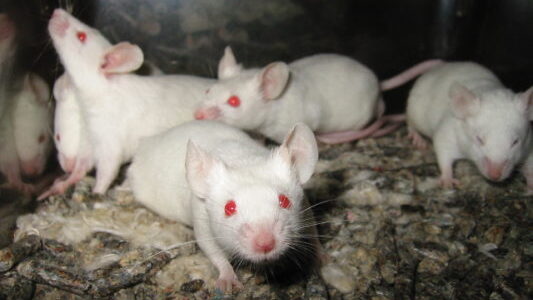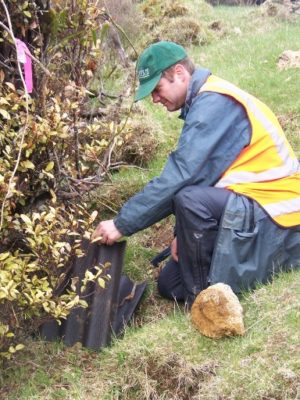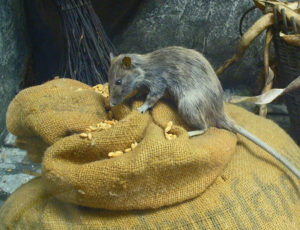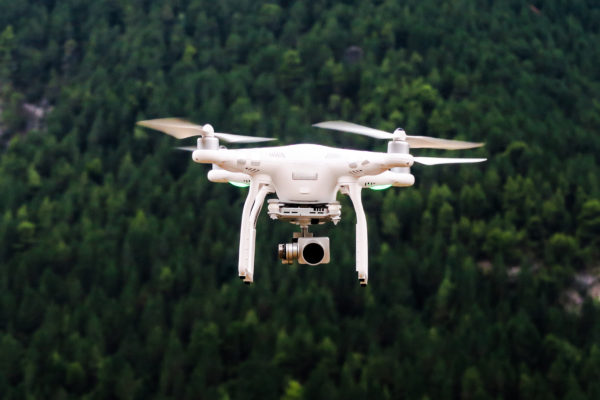Rats and mice aren’t just our problem. They’re some of the most widespread and damaging invasive alien species on islands globally.

A team of scientists lead by Karl J. Campbell from Island Conservation and including New Zealand-based scientists Al Glen and Charles Eason, have carried out an indepth review of what’s just over the horizon in terms of innovative technologies and tools to eradicate rodents. Their article on the next generation of rodent eradication techniques was published in a special ‘Tropical Rat Eradication’ of Biological Conservation.
New Zealand may not be a tropical groups of islands, but their findings are equally relevant to us.
The researchers investigated a suite of different techniques and technologies including some, such as self-resetting traps, which are already available and others, such as rodent-specific toxins which should be available very soon, along with technologies such as genetic engineering which are still being investigated. They also looked at factors such as human habitation which currently limit what it is feasible to do.
“The current toolbox for insular rodent eradications is reliant on the application of sufficient anticoagulant toxicant into every potential rodent territory across an island. Despite significant advances in the use of these toxicants over recent decades, numerous situations remain where eradication is challenging or not yet feasible. These include islands with significant human populations, unreceptive stakeholder communities, co-occurrence of livestock and domestic animals, or vulnerability of native species.”
Horizon scanning
The ‘glimpse into the future’ carried out by the researchers, is known as ‘horizon scanning’.
“Horizon scanning is a structured process whereby current problems are assessed against potential future solutions. We undertook such an exercise to identify the most promising technologies, techniques and approaches that might be applied to rodent eradications from islands. We highlight a Rattus-specific toxicant, RNA interference as species-specific toxicants, rodenticide research, crab deterrent in baits, prophylactic treatment for protection of non-target species, transgenic rodents, virus vectored immunocontraception, drones, self-resetting traps and toxicant applicators, detection probability models and improved stakeholder community engagement methods.”

Crab-deterrent aims to stop tropical island land crabs eating the bait and ingesting the toxins (which they’re highly tolerant of) and therefore enabling toxin to enter the food chain. With the exception of crab-deterrent, most of the potential methods identified in the paper could equally be applied to New Zealand.
“Today, rodent eradications on any island larger than 5 ha rely exclusively on the use of anticoagulant toxicants… Of the anticoagulants, brodifacoum is the most commonly used and has had the highest success rate. Desirable characteristics of brodifacoum include: its high oral toxicity to rodents, likely lethal effects from a single feed, can be combined with bait that is highly palatable to rodents, delayed symptoms of toxicosis, low water solubility, is relatively economic to manufacture and incorporate into a bait matrix, and it is currently registered for use in many countries. Disadvantages include brodifacoum’s broad-spectrum toxicity to vertebrates, moderate duration of persistence, ability to biomagnify (i.e. process whereby the tissue concentrations of a contaminant increase as it passes up the food chain), mode of death and negative public perception.”
There are other issues and limitations too, including animal welfare and cost. So what does ‘horizon scanning’ reveal about the potential – and potential issues – of future methodologies?
“We classified innovation ideas as incremental or transformative. Incremental innovations provide supplemental improvements to existing tools to tackle rodent eradications with greater efficacy on islands where eradication is currently deemed possible, while transformative innovations provide tools that will allow the eradication industry to undertake rodent eradication projects on islands currently considered unfeasible… Ten innovative technologies, techniques and approaches were identified that in the future might be applied to rodent eradications from islands.”
Rodenticides
“The need for non-anticoagulant toxicants that are effective but less persistent than second-generation anticoagulants, and therefore likely to be less hazardous to non-target bird species and other non-target species, has been highlighted over the last 15 years… Ideally, alternatives to existing anticoagulants would combine limited persistence and humaneness; however this is a significant challenge… A highly-specific rodenticide that is non-toxic to other species at rates that they could potentially encounter would dramatically increase the rate at which rodent eradication projects occur.”

One such possibility is ‘norbormide’ or a derivative of that compound.
“Norbormide is highly toxic to members of the genus Rattus compared to other mammals or birds. Rats are 150-fold and 40-fold more sensitive to norbormide than mice and guinea pigs respectively, while most other mammals and birds tested are >100-fold less sensitive.”
Norbormide has been around since the 1960s and death occurs within minutes of a rat consuming a lethal dose. The problem was, rats didn’t actually want to eat it. The product was quickly withdrawn.
“Prodrug forms of norbormide have been developed that aim to delay the action of the toxicant and increase palatability by masking the taste… Choice trials with the most promising norbormide prodrug have shown high bait acceptability and 83% mortality. For eradication projects, high bait acceptance leading to 100% mortality of the target population is a prerequisite. There are a number of research teams around the world looking at different ways of improving the effectiveness of norbormide and producing it in forms which are more palatable.”
Rats are our biggest problem – but when it comes to genetic engineering, we know a lot more about mice.
Transgenic rodents
“While invasive rats represent the most significant threat to island biodiversity, the house mouse represents an initially more promising system for pursuing genetic approaches as it is among the best studied species in terms of genetics, reproductive biology and sex determination, behaviour, and tractability for genetic manipulation. Successful approaches developed in mice could likely be extended to rats.”
“Genetic approaches can be designed to be species-specific and either self-limiting or self-replicating. Techniques such as gender distortion and Trojan females exist, and interest is increasing in their application for vertebrate pest control. Perhaps the most promising of the suite of potential genetic approaches is the ‘daughterless’ approach that has been successfully engineered for insect pest eradication and successfully tested in the laboratory, but not yet in the field.”
“Genetically-modified males could carry transgenes that do not produce daughters (sex lethal) or induce XX individuals (normally female) to develop instead as sterile males (sex reversal resulting in daughterless mice), while XY individuals would develop as normal, fertile males capable of spreading the transgene. With a substantial reduction in the number of females, mouse populations should die out.”
It sounds futuristic – but surprisingly, the trait has been around for a while.
“Daughterless lab mice were documented over three decades ago, but the potential application of this trait for population control was not realized until more recently. On its own, the daughterless mouse approach would require repeated releases of large numbers of male mice and might not be scalable. However, mouse eradications are considered more challenging than rat eradications , and mouse populations on small islands could serve as a proof-of-concept. In order to scale-up, gene drive systems could be used to potentiate the effectiveness of the daughterless approach.”
Viruses as vectors
Using viruses as vectors is another technique that has been on the agenda for a while. The idea behind virus-vectored immunocontraception is that a species-specific virus is modified to produce a protein that then causes an immune response in the target organism. This immune response makes the target’s immune system attack its own reproductive cells. The infected individual becomes sterile. It is a method which comes with significant advantages – but also risks.
“There are many advantages of immunocontraception for biological control. It is considered humane by the public and wildlife welfare organizations, is likely environmentally benign, and it could potentially be cheaper than traditional control methods because it is to an extent self-disseminating. Therefore, VVIC could be used to treat large inaccessible areas at a minimal cost. This technology could conceivably be used at very large scales; archipelago, country and continent, or isolated single islands… Disadvantages of VVIC include irreversibility, development of host resistance, need for engineering of a genetically modified vector, difficulty of controlling vectors once released, and the risks of irreversible genetic alterations of the population/species through selection. Additionally, there is always the possibility of either unanticipated or acquired zoonotic transmission of infectious agents.”
We might want to think rather carefully about that one.
Drones

Major applications for drones related to the eradication of rodents include animal detection via high definition infra-red cameras with pre-programmed night flights, the delivery of baits, securing timely high resolution imagery of the area of interest and facilitating the monitoring of population responses of conservation targets… Within a decade we expect UAVs to be an integral part of many rodent eradications.”
Other technologies and techniques identified by the researchers included self-resetting traps and toxicant applicators – some of which are already available, whilst others are currently under development.
Spitfire
“A prototype self-resetting device that delivered a palatable liquid bait to small mammalian pests was designed in the 1990s and 2000s in New Zealand but was not commercialised. Building on this prototype, a self-resetting toxin delivery device (the Spitfire) has been developed by Connovation Ltd. (Auckland, New Zealand), Lincoln University and the New Zealand Department of Conservation. Taking advantage of natural rat grooming behaviour, the system sprays a measured dose of a toxicant in a highly palatable carrier paste onto the abdomen as the animal passes through a tunnel. The animal then grooms off the paste and ingests the toxicant. Each Spitfire is capable of delivering approximately 100 doses and is fitted with a counter and a delay mechanism. Different versions of the Spitfire are being developed to target different pest species; all use the same basic firing mechanism, but have different housings and may deliver different toxins.”
Social processes
Finally, the researchers look at social engagement. Social processes are important and engagement with community may need to improve for large-scale eradications to be successful. It’s not just about the technology.
“Eradication requires improved social engagement and increased social receptivity to change as much as it requires success in technical expertise. Eradication of invasive species is often opposed by members of local communities. On the surface, opposition can stem from many causes, but some commonly reported concerns include animal welfare, the safety of people and their domestic animals, and the value placed on the species proposed for eradication by some people. Yet, these tangible concerns are often only the tip of the iceberg; they can be symptoms of more deep-seated social conflicts that are not explicitly expressed such as a perceived lack of respect, meaningful participation and voice, or mistrust and resentment towards the institutions proposing eradication, or towards conservationists in general.”
So what’s next?
“Preventing extinctions and improving human livelihoods by eradicating invasive rodents from islands will require innovative approaches, technologies and tools. The potential and existing innovations identified in this horizon scan, either individually or in combination, have the potential to increase the feasibility of rodent eradications on islands. We hope the identification of these potential and actual innovations will catalyze applied research and developments in this field, assist policy makers and provide practitioners useful insight.”
It’s a long article and can only be summarised here – but well worth reading in full. The article is published in Biological Conservation and is freely available online through Researchgate:

